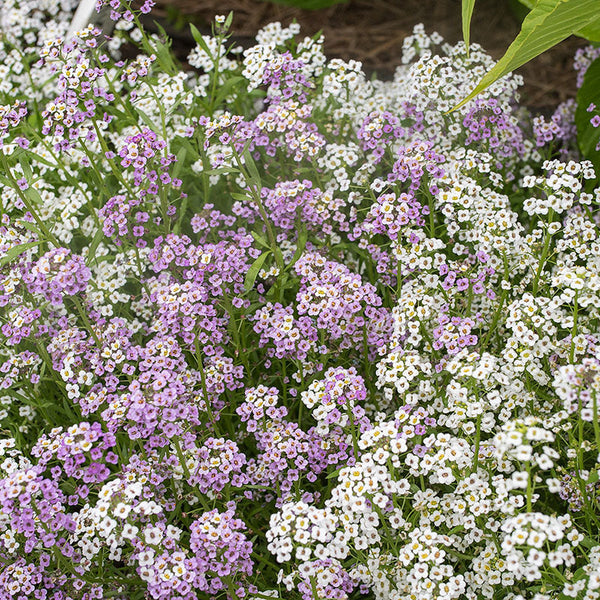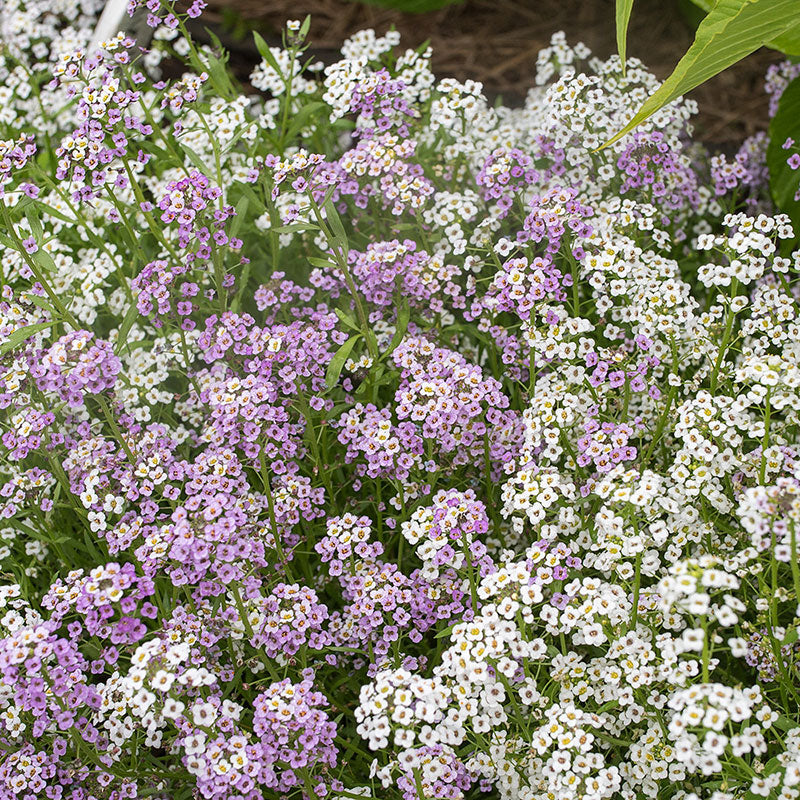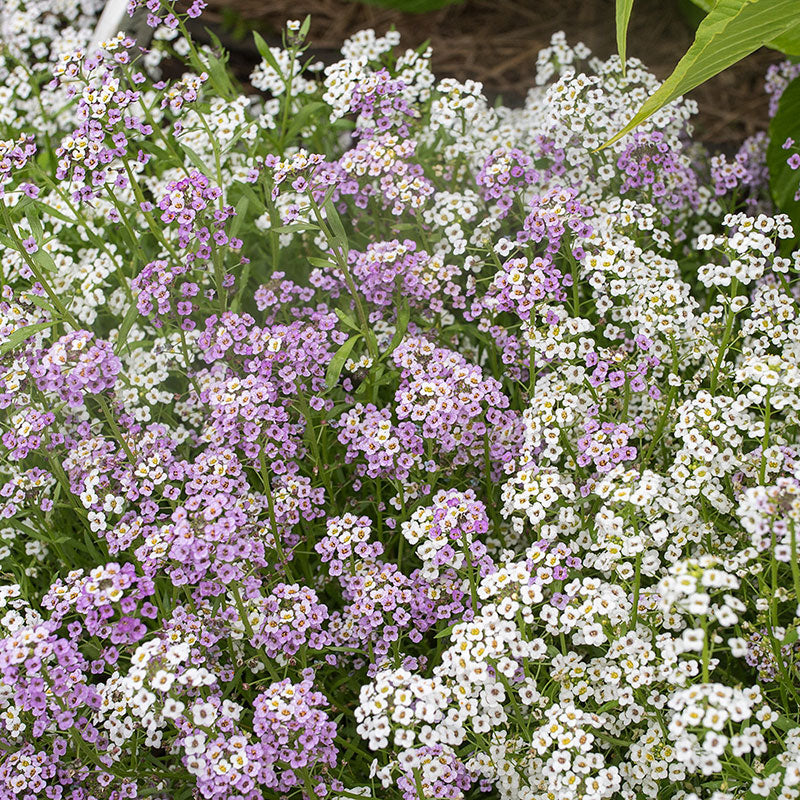SOWING INSTRUCTIONS
Depth:
Surface sow and press in lightly; requires light to germinate.
Seed To Bloom:
8-12 weeks
Starting Indoors:
Sow indoors 6-8 weeks before last frost. Keep at 55-70°F.
Starting Outdoors:
Direct sow 3 weeks before last spring frost and successive sow every 3 weeks if desired. Sprinkle seeds thinly on the soil surface and rake in.
PLACEMENT & CULTIVATION
Sweet alyssum 'Paletta Mix' has waves of honey-scented, bee-attracting blooms that are perfect for softening garden edges and spilling from pots and window boxes. Not particular about soil, as it will grow and bloom in poor soil. A top beneficial insect attracting flower to add to vegetable gardens. Shear mid-summer and fertilize for quick rebloom or resow anytime in the season, including late summer as the weather cools, for fall flowers. Self-sows.
Soil pH:
Slightly acidic to neutral
Fertilizer:
Mix in 2-4" of compost prior to planting.
Diseases & Pests:
Protect young plants from slugs by sprinkling some crushed eggshells or diatomaceous earth on the soil surface surrounding the plants. Pelletized iron phosphate is another effective option.
































